Expeditions
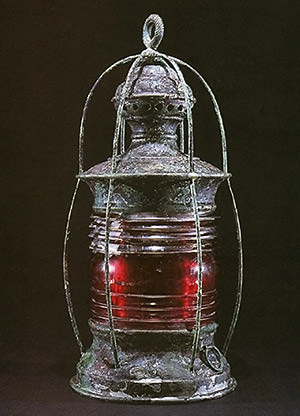
Approaching Monitor on the first submersible dive in 1977, an archaeologist spotted a brass navigation lantern near the turret. Its red Fresnel lens suggested it was a signal lantern. In his account of watching Monitor sink from Rhode Island, Paymaster William Keeler mentioned that at approximately 1:30 a.m., the red distress lantern burning atop the turret and the ship itself was no longer visible.
This lantern was the last visible sign of Monitor before it sank, and more than a century later in 1977, it became the very first artifact recovered from the wreck. The lantern is currently on display in the USS Monitor Center at The Mariners' Museum and Park in Newport News, Virginia.
In 1987, NOAA completed baseline studies at the site that were essential for determining the rate of deterioration of the hull and changes in the sanctuary environment. In the 1990s, NOAA began noticing an alarming pattern of accelerated deterioration in several areas of the wreck. Due to this alarming rate of decay, NOAA was given a mandate in 1996 by Congress to develop a plan to preserve Monitor. In 1998, NOAA released a long-range plan that outlined a six-step proposal for stabilizing portions of the Monitor's hull and recovering the vessel's steam engine and rotating gun turret.
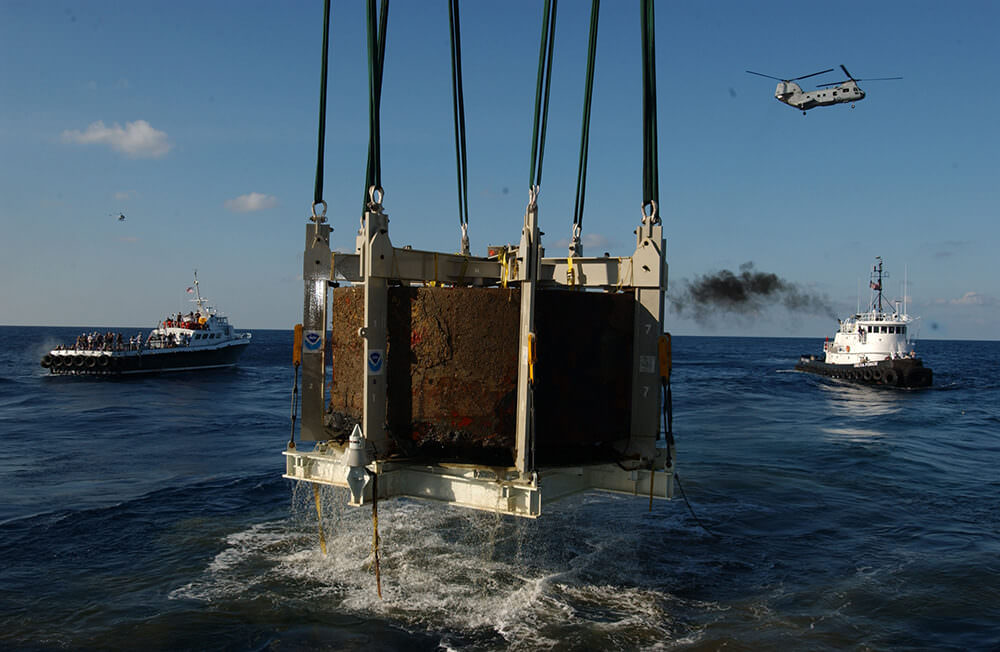
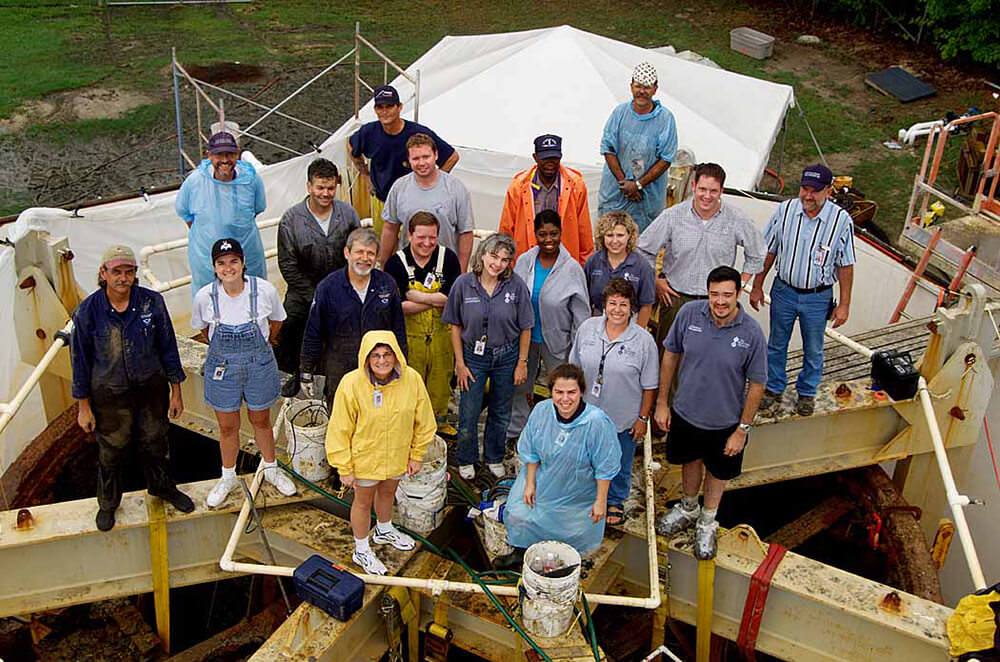
Monitor National Marine Sanctuary Expedition Timeline
1970
-
1975 - On January 30, the 113th anniversary of the vessel’s launch, Monitor National Marine Sanctuary is created as the first U.S. national marine sanctuary.
-
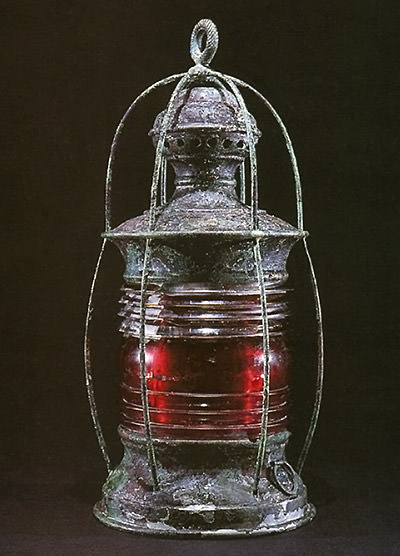
1977 - NOAA carries out its first expedition to the site in July and August, using the Research Vessel Johnson and a submersible.
-
1979 - In July and August, NOAA sponsors an ambitious 28-day expedition to Monitor.
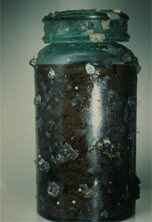
1980
-
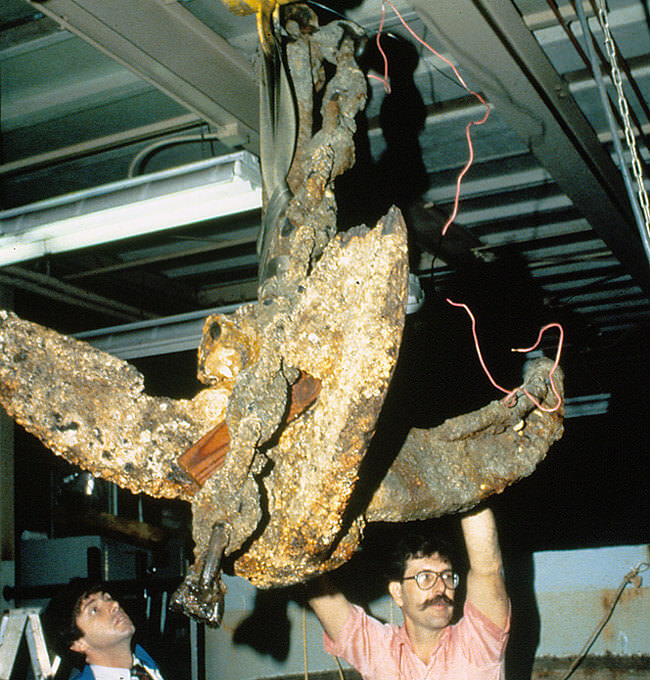
1983 - Monitor’s anchor is recovered.
-
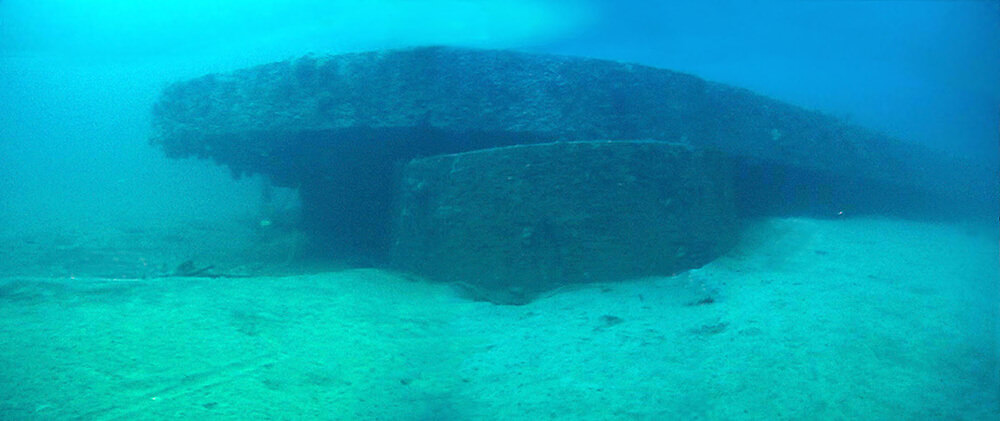
1985 - A number of targets believed to be structural materials or Monitor artifacts are located around the wreck site.
-

1987 - March 9 marks the 125th anniversary of the Battle of Hampton Roads. The Mariners’ Museum in Newport News, Virginia, is designated the principal repository for Monitor artifacts.
1990
-
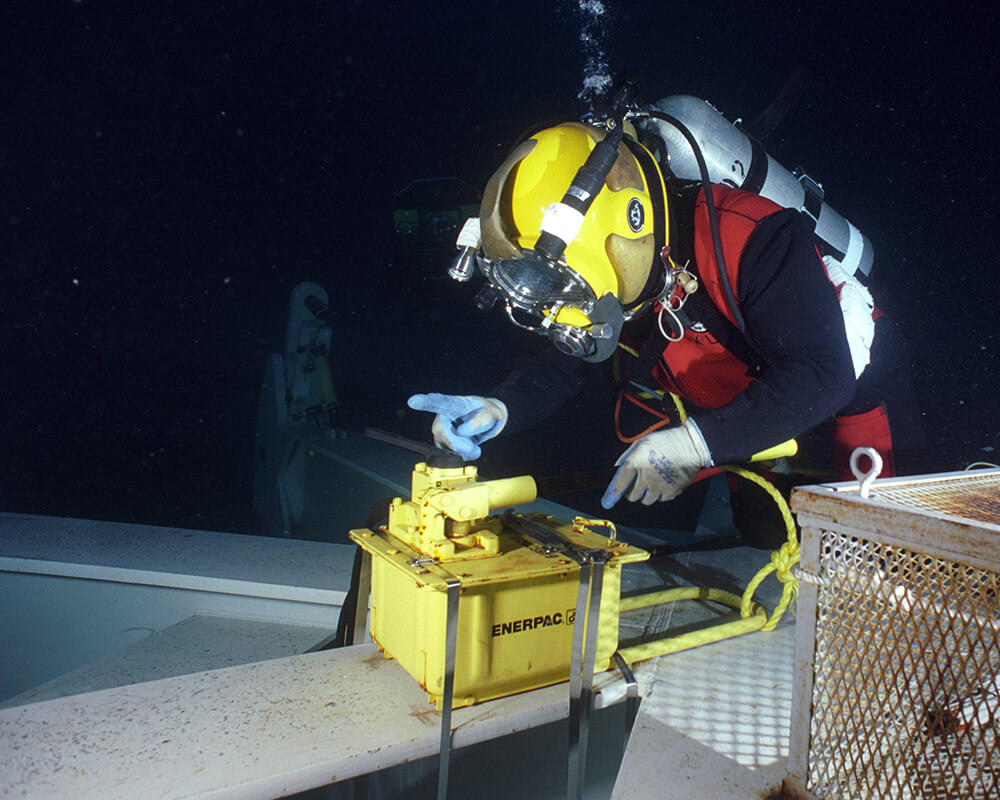
1990 - Realizing a need to visit the sanctuary on a more regular basis, NOAA begins planning periodic site inspections.
-
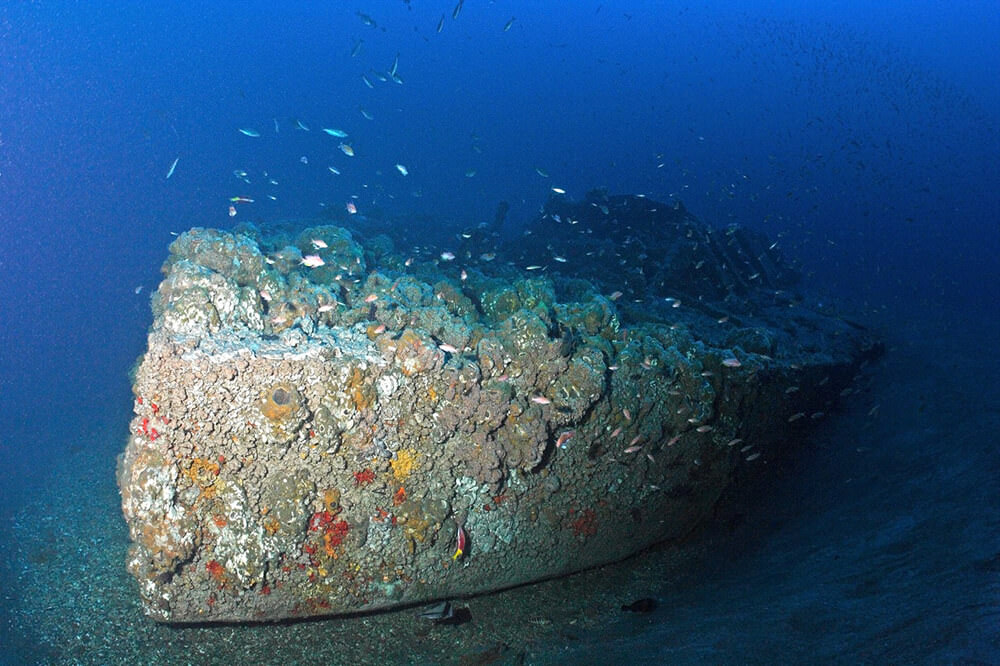
1991 - After noticing increased deterioration of the wreck, an emergency assessment of the Monitor wreck site is conducted.
-
1992 - Rough weather in August hampers the assessment expedition, but sanctuary staff observe that areas of the deck near the curve of the bow have become detached from the ship.
-
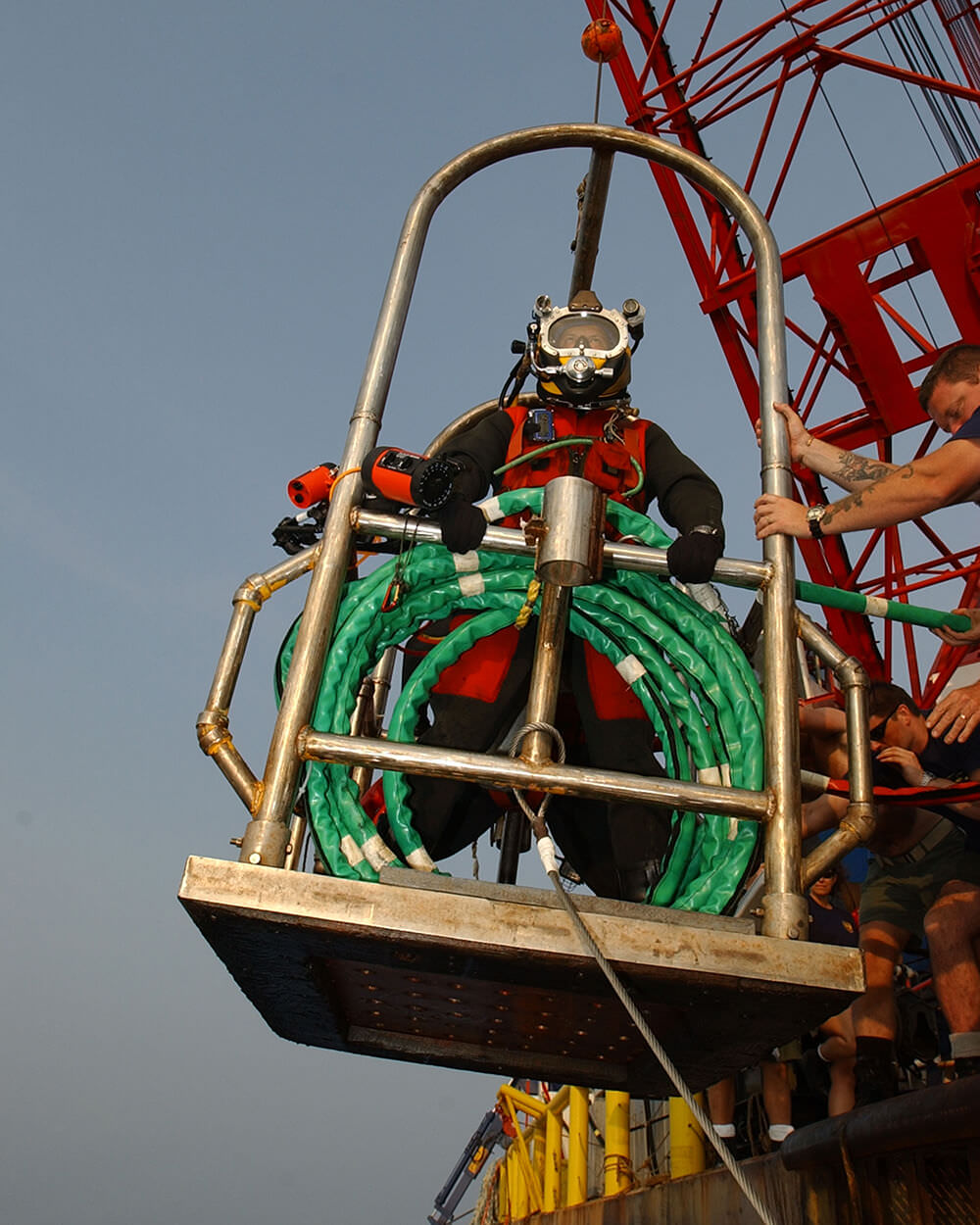
1993 - An 18-day expedition is conducted using crewed submersibles and divers operating from a dive bell.
-
1998 - NOAA finalizes a six-step plan for stabilizing a portion of the hull and recovering the vessel’s steam engine and rotating turret.
-
1999 - NOAA and the U.S. Navy begin planning large-scale recovery expeditions and implementing a stabilization plan.
2000
-
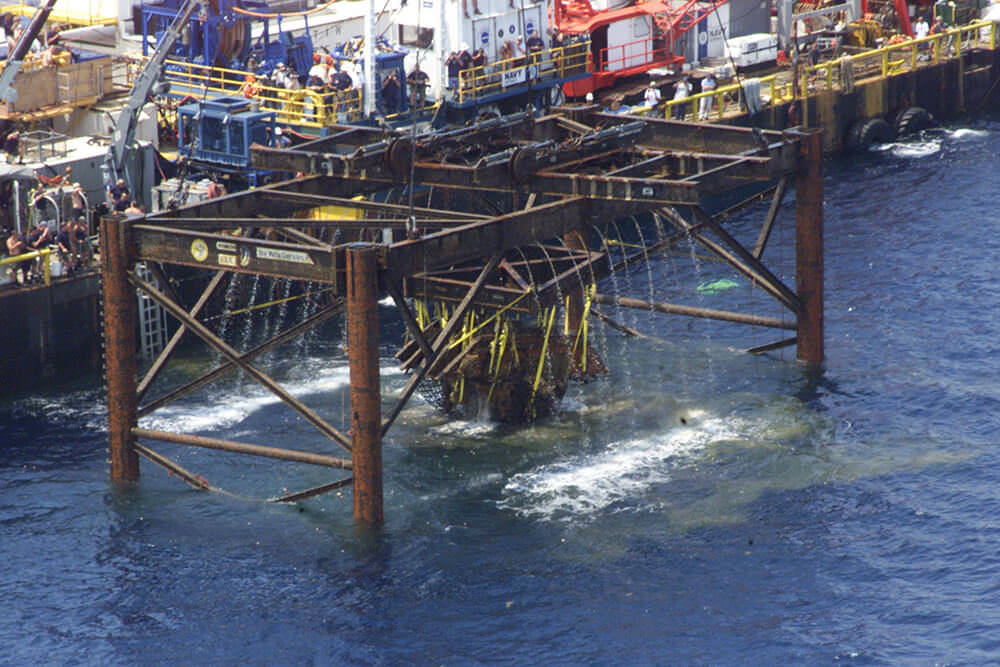
2001 - An expedition successfully recovers more than 250 artifacts, including Monitor’s vibrating lever steam engine.
-

2002 - NOAA and the U.S. Navy conduct a 41-day effort to recover the gun turret.
More Images (2002)
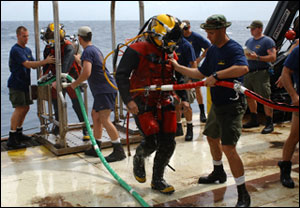
Crew members help divers prepare for their dive.
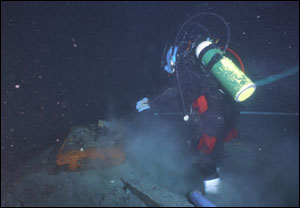
Deployed divers begin uncovering the ship’s turret for the first time in 140 years.
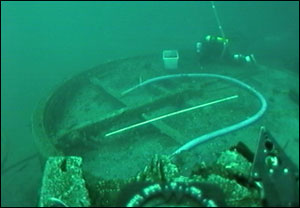
The USS Monitor's uncovered turret resting on the ocean floor.
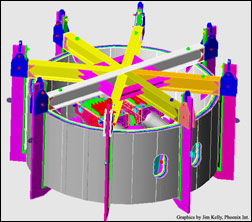
A claw-like structure known as the Spider would be used to secure the turret.
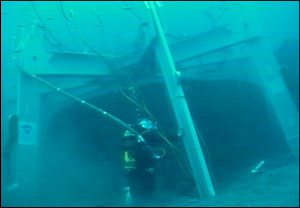
The Spider is lowered over the top of Monitor's turret.
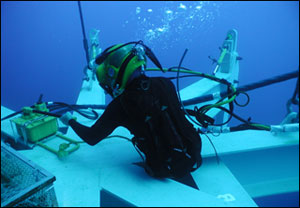
Navy Diver Petty Officer Steve Grier works to adjust one of the Spider's legs.
-
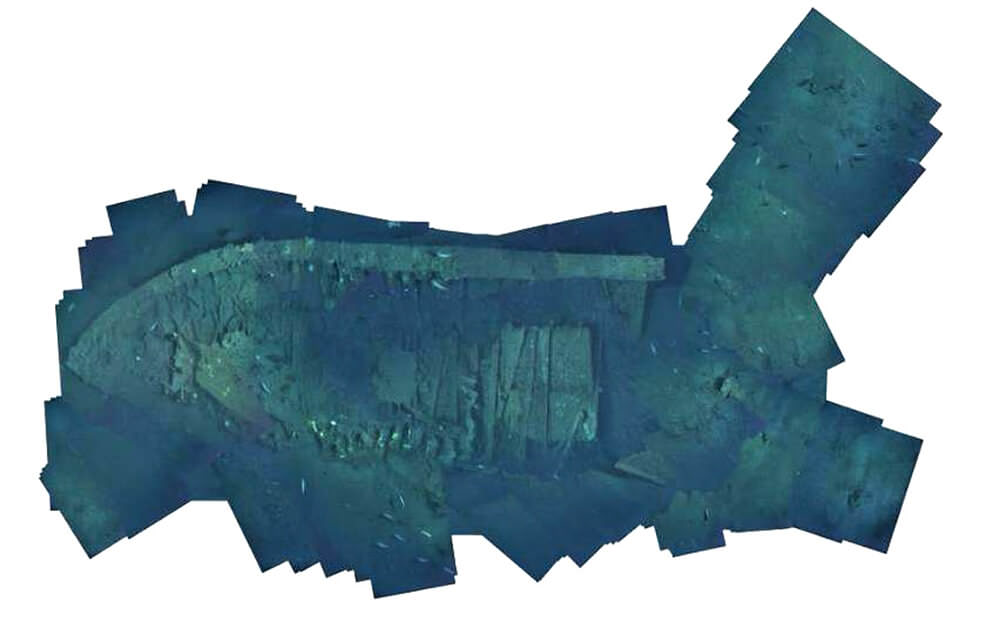
2006 - A team of researchers conduct a major mapping expedition to collect high-resolution digital still and video imagery of Monitor to create a high-quality photomosaic of the wreck site.
2010
-
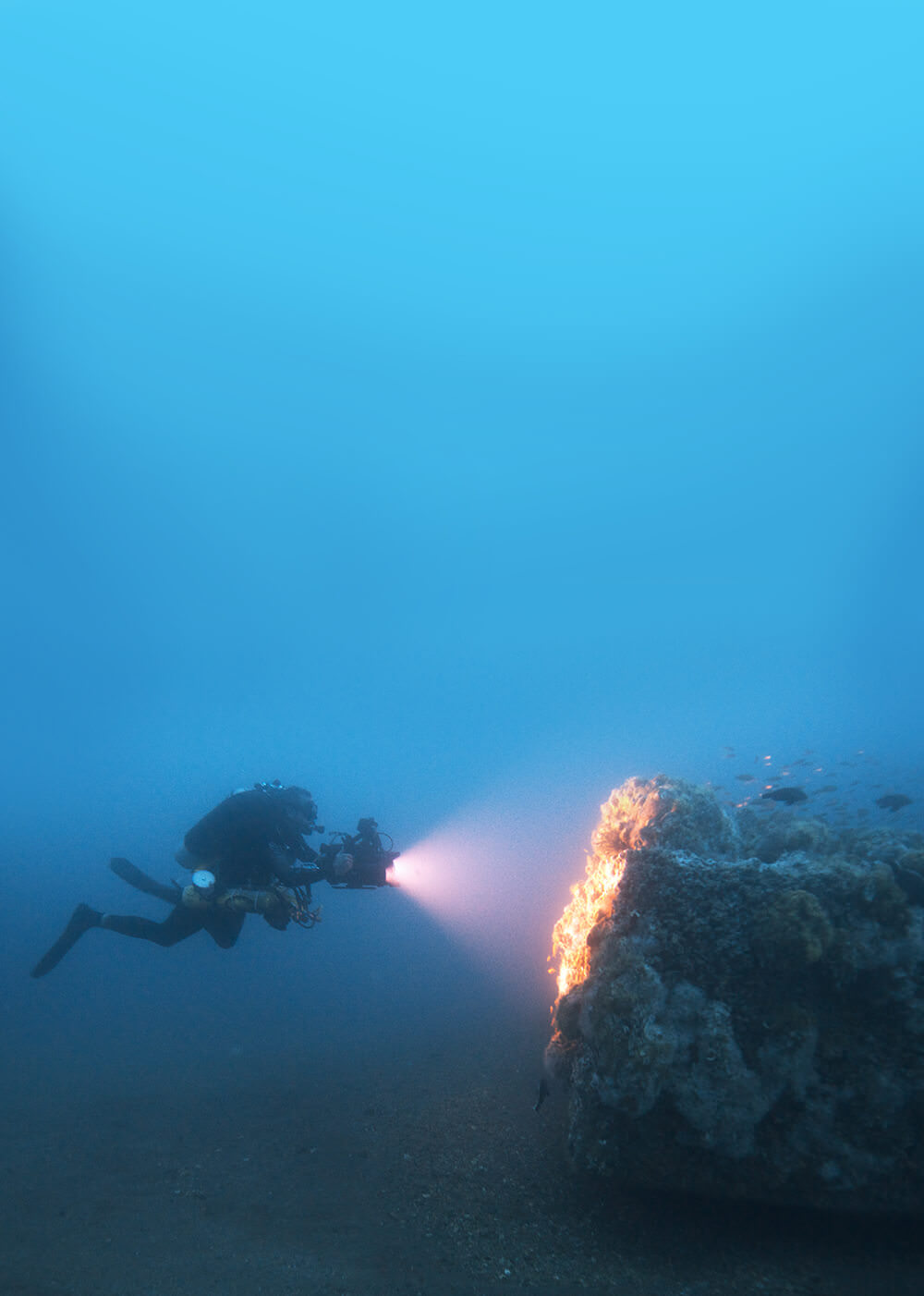
2011 - A team of researchers collects high-resolution digital still and video images of Monitor.
-

2015 - Researchers collect high-resolution digital still and video images of Monitor to create a photogrammetric model of the shipwreck.
2020
-

2022 - Partnering with Global Foundation for Ocean Exploration, three dives were made to USS Monitor to collect photos and video, including 3D video of the ship and site.

